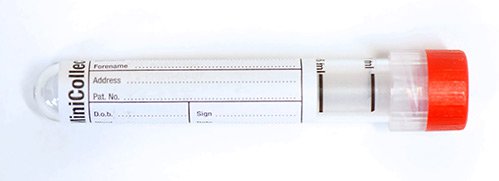25-Hydroxyvitamin D (Vitamin D)
Chemical Pathology
Notes
Routine screening of vitamin D is not recommended in asymptomatic individuals.
- Individuals who are asymptomatic but have risk factors should be advised to consider supplements as per the Department of Health Advice on Supplements for at risk groups
- Monitoring of nutritional supplementation is not required.
- Monitoring of high dose therapy should be done >3 months after replacement to assess response; however, calcium levels should be checked after one month and more frequently if significant renal impairment is present.
When to check vitamin D level:
Vitamin D deficiency should be considered and checked only if all of the following criteria are met:
The patient has one or more of the following clinical features:
- Insidious onset of widespread or localised bone pain and tenderness (especially lower back and hip pain, but may include rib, thigh or foot pain). In children bone deformity, reluctance to weight bear, impaired growth
- Proximal muscle weakness i.e. quadriceps and glutei. This may cause difficulty rising from a chair or a waddling gait.
- Swelling, tenderness and redness at pseudo-fracture sites
- Fractures, typically femoral neck, scapula, pubic rami, ribs or vertebrae
- Non-specific myalgia, especially with a raised creatinine kinase (CK)
- Myalgia on prescription of a statin
AND
The patient has one or more of the following risk factors:
- Black and ethnic minority patients with darker skin
- Elderly patients in residential care or housebound
- Intestinal malabsorption, for example cystic fibrosis, coeliac disease, inflammatory bowel disease, gastrectomy or bariatric surgery, radiation enteritis
- Routine covering of face or body, for example wearing a veil or habitual sunscreen use
- Vegan or vegetarian diet
- Liver or renal disease
- Medications including cholestyramine, rifampicin, glucocorticoids, antiretrovirals
- Pregnant and lactating women
- Obesity (BMI >30)
AND
Other causes for symptoms have been excluded for example:
- Myeloma
- Rheumatoid arthritis
- Polymylagia rheumatica
- Hypothyroidism
Other clinically appropriate indications for measuring vitamin D include:
- Older patients with a history of falls
- Bone disease that may be improved with vitamin D treatment or where correcting vitamin D prior to treatment is appropriate
- Before commencing zoledronic acid or Denosumab
- Unexplained biochemical abnormality (e.g. isolated raised alkaline phosphatase level;,persistently low fasting phosphate, hypocalcaemia or raised PTH).
- Prior to thyroidectomy or bariatric surgery
- Anti-convulsant treatment (NICE guidelines recommend check every 2 - 5 years).
- At initial diagnosis in patients with multiple sclerosis
Sample requirements
If the patient is on high dose biotin therapy (>5 mg/day), collect the sample at least 8 hours after the last dose.
For adults, blood taken into a 5mL gold top tube (or rust top for the Acute Unit)

For children, blood taken into a 3.5mL rust top tube

For neonates, blood taken into a 1.0mL minicollect plain tube

Storage/transport
Send at ambient temperature to the laboratory. If unavoidable, samples can be stored refrigerated overnight.
Required information
Relevant clinical details including the reason for the request and any current supplementation.
Turnaround times
Samples are assayed locally at GRH, with results normally available within 72 hours.
Reference ranges
- 25-hydroxyvitamin D is assayed by immunoassay with total 25-hydroxyvitamin D reported.
- Seasonal variation is observed with vitamin D levels with values being higher at the end of summer and lower in winter due to changes in levels of UVB exposure.
- Cut off values are based on recommendations in the National Osteoporosis Society Guidelines 2018
| Vitamin D nmol/L | Vitamin D status |
|---|---|
| > 50 | Sufficient for almost the whole population |
| 25- 50 | May be inadequate in some people |
| < 25 | Deficient |
Vitamin D replacement is appropriate for deficiency.
For insufficiency (vitamin D of 25 - 50 nmol/L), treatment may be appropriate in some patients. Please refer to Trust treatment guidelines for further information.
Further Information
To learn more about vitamin D access links below:-
- Lab Tests Online
- Vitamin D and Bone Health: A Practical Clinical Guideline for Patient Management. The National Osteoporosis Society 2018
- GHNHSFT Vitamin D Treatment Guidelines
- NICE PH56: Vitamin D - Increasing supplement use among at-risk groups
Page last updated: 21/04/2022